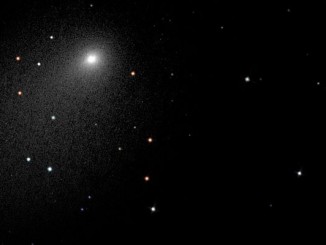The Hubble Space Telescope recently aimed its Wide Field Camera 3 at two well-known planetary nebulae, observing in near-ultraviolet, visible and near-infrared wavelengths to reveal stunning tapestries of complexity that shed new light on the processes at work when stars die. Joel Kastner of the Rochester Institute of Technology said the new views of NGC 6302, aka the Butterfly Nebula, and well-studied Jewel Bug nebula, aka NGC 7027, “provide the most comprehensive view to date of both of these spectacular nebulae. As I was downloading the resulting images, I felt like a kid in a candy store.” The Butterfly Nebula is located about 3,800 light years from Earth. The gas that once made up the central star’s outer layers has been blown away over about 2,200 years. The butterfly shape stretches more than two light years, or about half the distance between the Sun and the nearest star.

NGC 7027, below, slowly puffed away the outer layers of its central star in spherical or spiral patterns for centuries until more recent eruptions formed equally spectacular patterns.

According to a Hubble news release, the new images “reveal in vivid detail how both nebulae are splitting themselves apart on extremely short timescales — allowing astronomers to see changes over the past couple of decades. In particular, Hubble’s broad multi-wavelength views of each nebula are helping the researchers to trace the histories of shock waves in them. Such shocks are typically generated when fresh, fast stellar winds slam into and sweep up more slowly expanding gas and dust ejected by the star in its recent past, generating bubble-like cavities with well-defined walls.”



